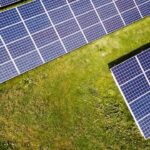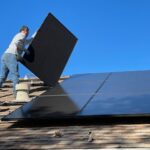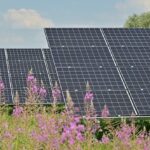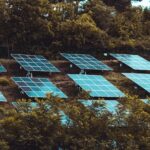China Issues Guiding Opinion to Promote Circular Utilization of Retired Wind and Photovoltaic Equipment
In a bid to tackle the mounting challenge of managing retired wind and photovoltaic (PV) equipment, China’s National Development and Reform Commission (NDRC) and several other ministries have jointly issued a groundbreaking document aimed at bolstering the circular utilization of such equipment. The directive, labeled “Guiding Opinion on Promoting Circular Utilization of Retired Wind and Photovoltaic Equipment” (Document No.〔2023〕1030), lays out comprehensive strategies to address the impending issue of recycling and repurposing a growing number of wind turbines and PV devices.
China’s rapid growth in the new energy sector has propelled it to become a global leader in wind and solar energy installations. However, with industrial advancements and technological obsolescence, the nation now faces a looming challenge of how to manage the retiring equipment effectively. To uphold the spirit of the Communist Party’s 20th Congress and to adhere to the principles laid out in the “2030 Carbon Peak Action Plan,” the directive outlines a series of imperative measures to accelerate the establishment of a robust waste recycling ecosystem and promote the circular utilization of retired wind and PV equipment.
Key Points and Objectives:
The document sets forth a clear agenda and objectives for the near and distant future. By 2025, the central aim is to establish a fundamental framework for handling retired equipment from centralized wind farms and PV power plants. Additionally, the related standards and regulations for the circular utilization of retired wind and PV equipment are expected to be further refined, while crucial technologies for resource recycling will see significant breakthroughs. Looking ahead to 2030, the document envisions that a comprehensive technical system for the complete lifecycle utilization of wind and PV equipment will be in place, along with a more robust resource recycling model and improved capacity to match retired equipment volumes. During this period, a notable enhancement in circular utilization proficiency within the wind and PV industry is anticipated, with several industrial clusters centered around the recycling of retired equipment likely to emerge.
Principles and Strategies:
The directive is underpinned by key principles that include a systemic perspective, innovation-driven initiatives, tailored strategies, regional coordination, and a focus on green and sustainable development. The overarching approach involves promoting green design, fostering innovative recycling technologies, and creating collaborative networks between manufacturers, energy enterprises, recyclers, and end-users.
Green Design and Resource Recovery:
To ensure the longevity of the new energy equipment and facilitate its recycling, the directive emphasizes the integration of green design principles during the manufacturing process. The document also calls for an overhaul of the current waste management system to improve efficiency in the dismantling, transportation, and repurposing of wind turbines and PV components. It advocates for the creation of an efficient cycle that encompasses product design, resource extraction, and safe disposal.
Policy Support and Industry Standards:
To stimulate growth in the circular utilization sector, the directive outlines a range of supportive policies and economic incentives, such as favorable taxation policies, financing facilities, and industry-specific support for regions and enterprises that exhibit the potential for fostering the circular economy.
The NDRC, in collaboration with other concerned departments, will play a pivotal role in orchestrating the multifaceted efforts outlined in the directive. Additionally, local governments and relevant industries will play a crucial role in the successful implementation of these strategies. The document further underscores the need to promote the achievements and exemplary models in the circular utilization sector and encourage technological exchange and cooperation.
In essence, the recently released directive reflects China’s strong commitment to sustainable development and environmentally conscious practices within the burgeoning field of renewable energy. As the country continues its transition to greener energy sources, the guiding opinion stands as a comprehensive roadmap toward effectively addressing the challenges posed by the retirement of wind and PV equipment while paving the way for a greener and more circular energy landscape.






